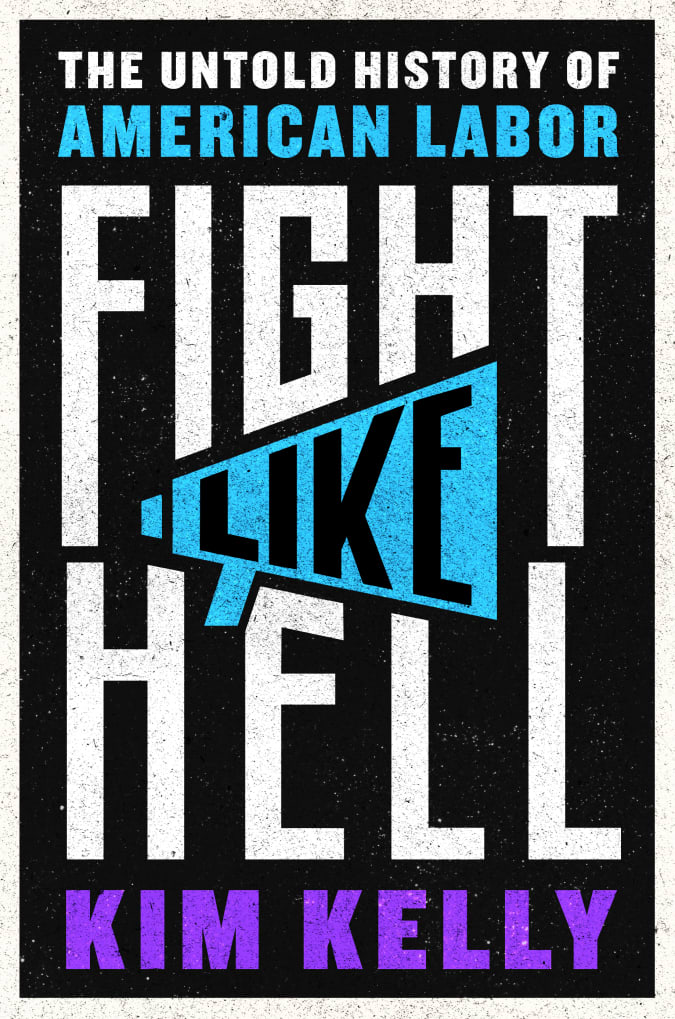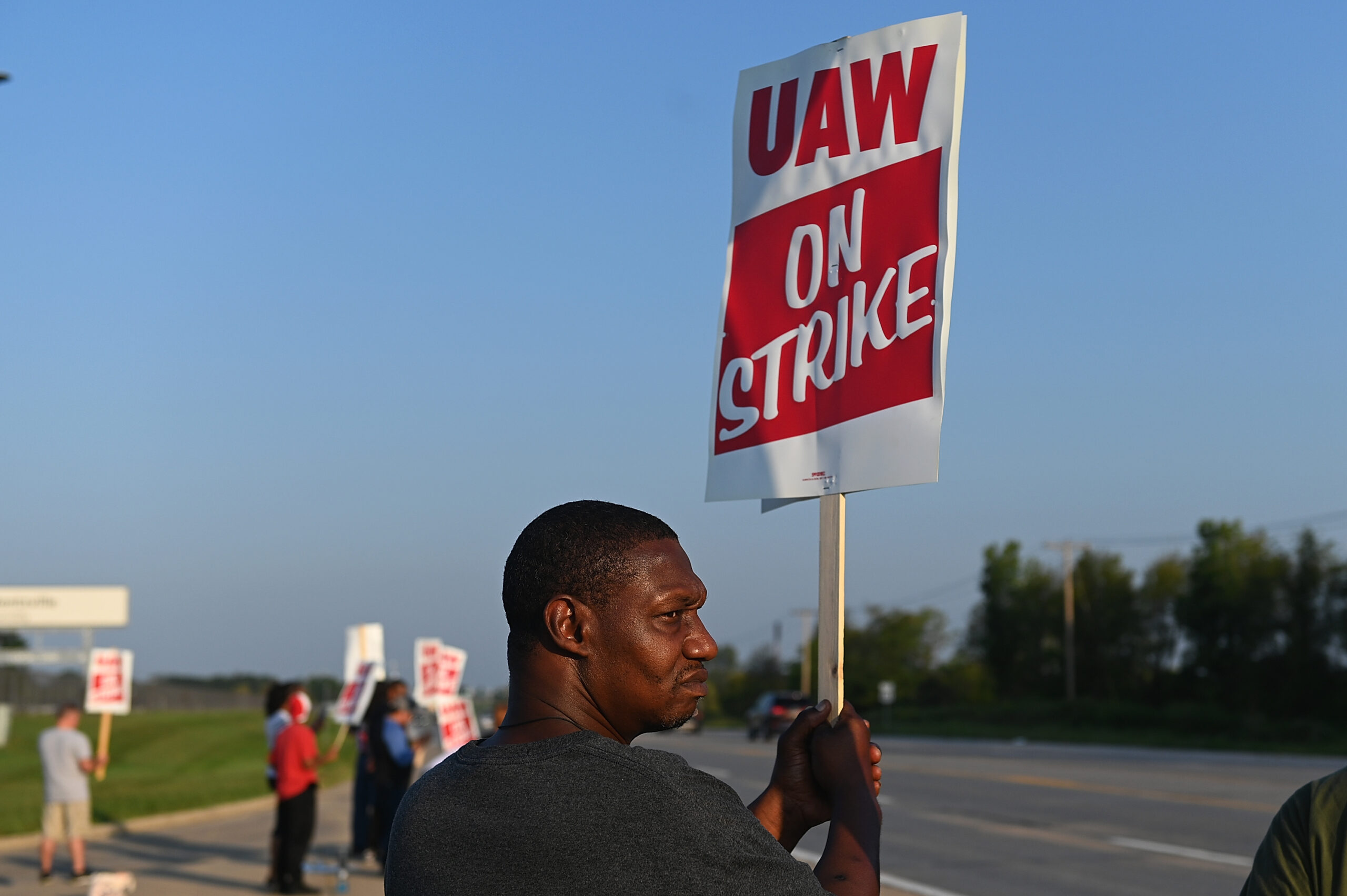Hitting the Books: Dodge, Detroit and the Revolutionary Union Movement of 1968
After decades on the decline intro, America’s labor movement is undergoing a massive renaissance with Starbucks, Amazon and Apple Store employees leading the way. Though the tech sector has only just begun basking in the newfound glow of collective bargaining rights, the automotive industry has a long been a hotbed for unionization. But the movement is not at all monolithic. In the excerpt below from her new book, Fight Like Hell: The Untold History of American Labor, journalist Kim Kelly recalls the summer of 1968 that saw the emergence of a new, more vocal UAW faction, the Dodge Revolutionary Union Movement, coincide with a flurry of wildcat strikes in Big Three plants across the Rust Belt.

Simon and Schuster
Excerpted from Fight Like Hell, published by One Signal/Atria Books, a division of Simon & Schuster, Inc. Copyright © 2022 by Kim Kelly.
As of 2021, the U.S. construction industry is still booming and the building trades are heavily unionized, but not all of the nation’s builders have been so lucky. The country’s manufacturing sector has declined severely since its post–World War II high point, and so has its union density. The auto industry’s shuttered factories and former jobs shipped to countries with lower wages and weaker unions have become a symbol of the waning American empire. But things weren’t always this dire. Unions once fought tooth and nail to establish a foothold in the country’s automobile plants, factories, and steel mills. When those workers were able to harness the power of collective bargaining, wages went up and working conditions improved. The American Dream, or at least, a stable middle class existence, became an achievable goal for workers without college degrees or privileged backgrounds. Many more became financially secure enough to actually purchase the products they made, boosting the economy as well as their sense of pride in their work. Those jobs were still difficult and demanding and carried physical risks, but those workers—or at least, some of those workers—could count on the union to have their back when injustice or calamity befell them.
In Detroit, those toiling on the assembly lines of the Big Three automakers—Chrysler, Ford, and General Motors—could turn to the United Auto Workers (UAW), then hailed as perhaps the most progressive “major” union in the country as it forced its way into the automotive factories of the mid-twentieth century. The UAW stood out like a sore thumb among the country’s many more conservative (and lily-white) unions, with leadership from the likes of former socialist and advocate of industrial democracy Walter Reuther and a strong history of support for the Civil Rights Movement. But to be clear, there was still much work to be done; Black representation in UAW leadership remained scarce despite its membership reaching nearly 30 percent Black in the late 1960s.
The Big Three had hired a wave of Black workers to fill their empty assembly lines during World War II, often subjecting them to the dirtiest and most dangerous tasks available and on-the-job racial discrimination. And then, of course, once white soldiers returned home and a recession set in, those same workers were the first ones sacrificed. Production picked back up in the 1960s, and Black workers were hired in large numbers once again. They grew to become a majority of the workforce in Detroit’s auto plants, but found themselves confronting the same problems as before. In factories where the union and the company had become accustomed to dealing with one another without much fuss, a culture of complacency set in and some workers began to feel that the union was more interested in keeping peace with the bosses than in fighting for its most vulnerable members. Tensions were rising, both in the factories and the world at large. By May 1968, as the struggle for Black liberation consumed the country, the memory of the 1967 Detroit riots remained fresh, and the streets of Paris were paralyzed by general strikes, a cadre of class-conscious Black activists and autoworkers saw an opportunity to press the union into action.
They called themselves DRUM—the Dodge Revolutionary Union Movement. DRUM was founded in the wake of a wildcat strike at Dodge’s Detroit plant, staffed by a handful of Black revolutionaries from the Black-owned, anti-capitalist Inner City Voice alternative newspaper. The ICV sprang up during the 1967 Detroit riots, published with a focus on Marxist thought and the Black liberation struggle. DRUM members boasted experience with other prominent movement groups like the Student Nonviolent Coordinating Committee and the Black Panthers, combining tactical knowledge with a revolutionary zeal attuned to their time and community.
General Gordon Baker, a seasoned activist and assembly worker at Chrysler’s Dodge Main plant, started DRUM with a series of clandestine meetings throughout the first half of 1968. By May 2, the group had grown powerful enough to see four thousand workers walk out of Dodge Main in a wildcat strike to protest the “speed-up” conditions in the plant, which saw workers forced to produce dangerous speed and work overtime to meet impossible quotas. Over the course of just one week, the plant had increased its output 39 percent. Black workers, joined by a group of older Polish women who worked in the plant’s trim shop, shut down the plant for the day, and soon bore the brunt of management’s wrath. Of the seven workers who were fired after the strike, five were Black. Among them was Baker, who sent a searing letter to the company in response to his dismissal. “In this day and age under the brutal repression reaped from the backs of Black workers, the leadership of a wildcat strike is a badge of honor and courage,” he wrote. “You have made the decision to do battle, and that is the only decision you will make. We shall decide the arena and the time.”
DRUM led another thousands-strong wildcat strike on July 8, this time shutting down the plant for two days and drawing in a number of Arab and white workers as well. Prior to the strike, the group had printed leaflets and held rallies that attracted hundreds of workers, students, and community members, a strategy DRUM would go on to use liberally in later campaigns to gin up support and spread its revolutionary message.
Men like Baker, Kenneth Cockrel, and Mike Hamlin were the public face of DRUM, but their work would have been impossible without the work of their female comrades, whose contributions were often overlooked. Hamlin admitted as much in his book-length conversation with longtime political activist and artist Michele Gibbs, A Black Revolutionary’s Life in Labor. “Possibly my deepest regret,” Hamlin writes, “is that we could not curb, much less transform, the doggish behavior and chauvinist attitudes of many of the men.”
Black women in the movement persevered despite this discrimination and disrespect at work, and they also found allies in unexpected places. Grace Lee Boggs, a Chinese American Marxist philosopher and activist with a PhD from Bryn Mawr, met her future husband James Boggs in Detroit after moving there in 1953. She and James, a Black activist, author (1963’s The American Revolution: Pages from a Negro Worker’s Notebook), and Chrysler autoworker, became fixtures in Detroit’s Black radical circles. They naturally fell in with the DRUM cadre, and Grace fit perfectly when Hamlin organized a DRUM-sponsored book club discussion forum in order to draw in progressive white and more moderate Black sympathizers. Interest in the Marxist book club was unexpectedly robust, and it grew to more than eight hundred members in its first year. Grace stepped in to help lead its discussion groups, and allowed young activists to visit her and James at their apartment and talk through thorny philosophical and political questions until the wee hours. She would go on to become one of the nation’s most respected Marxist political intellectuals and a lifelong activist for workers’ rights, feminism, Black liberation, and Asian American issues. As she told an interviewer prior to her death in 2015 at the age of one hundred, “People who recognize that the world is always being created anew, and we’re the ones that have to do it — they make revolutions.”
Further inside the DRUM orbit, Helen Jones, a printer, was the force behind the creation and distribution of their leaflets and publications. Women like Paula Hankins, Rachel Bishop, and Edna Ewell Watson, a nurse and confidant of Marxist scholar and former Black Panther Angela Davis, undertook their own labor organizing projects. In one case, the trio led a union drive among local hospital workers in the DRUM faction, hoping to carve out a place for female leadership within their movement. But ultimately, these expansion plans were dropped due to a lack of full support within DRUM. “Many of the male leaders acted as if women were sexual commodities, mindless, emotionally unstable, or invisible,” Edna Watson later told Dan Georgakas and Marvin Surkin for their Detroit: I Do Mind Dying. She claimed the organization held a traditionalist Black patriarchal view of women, in which they were expected to center and support their male counterparts’ needs at the expense of their own agenda. “There was no lack of roles for women… as long as they accepted subordination and invisibility.”
By 1969, the movement had spread to multiple other plants in the city, birthing groups like ELRUM (Eldon Avenue RUM), JARUM (Jefferson Avenue RUM), and outliers like UPRUM (UPS workers) and HRUM (healthcare workers). The disparate RUM groups then combined forces, forming the League of Revolutionary Black Workers. The new organization was to be led by the principles of Marxism, Leninism, and Maoism, but the league was never an ideological monolith. Its seven-member executive committee could not fully cohere the different political tendencies of its board or its eighty-member deep inner control group. Most urgently, opinions diverged on what shape, if any, further growth should take.
All products recommended by Engadget are selected by our editorial team, independent of our parent company. Some of our stories include affiliate links. If you buy something through one of these links, we may earn an affiliate commission.






